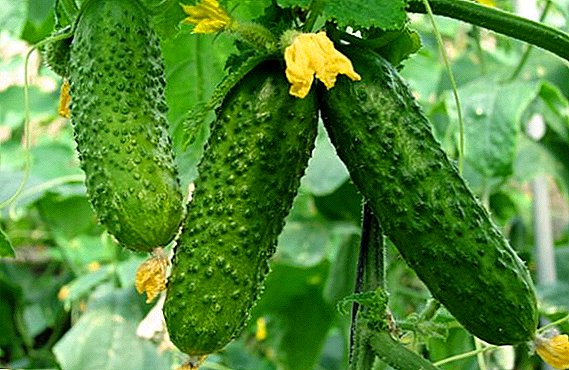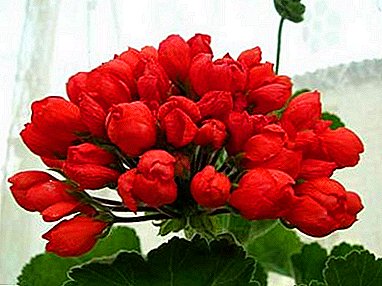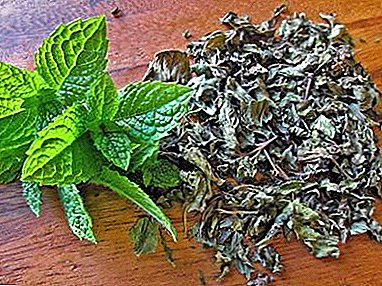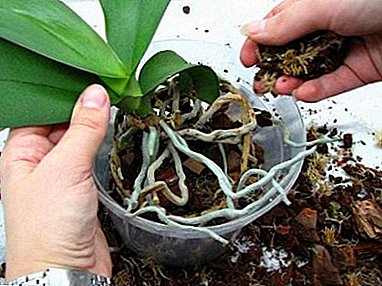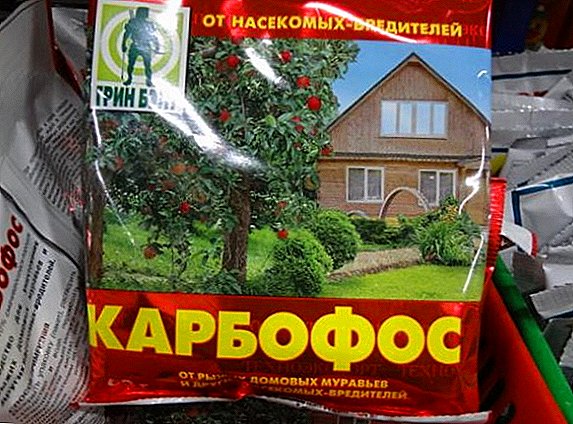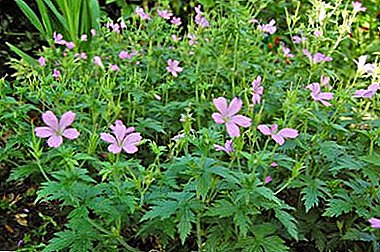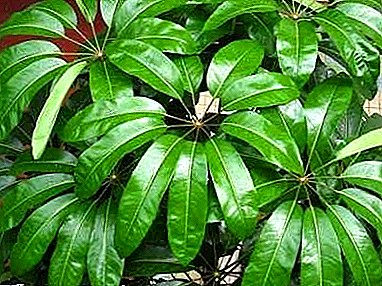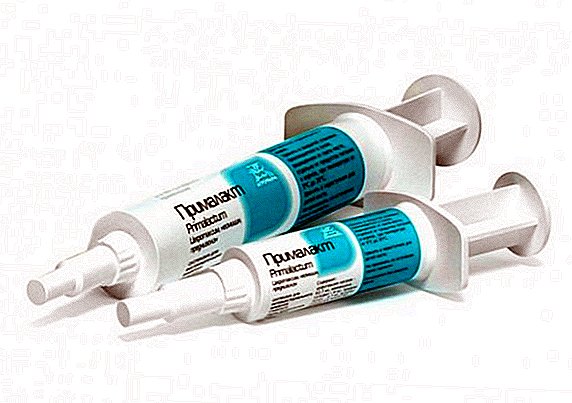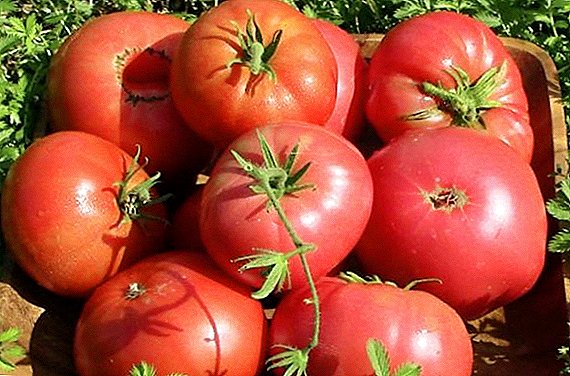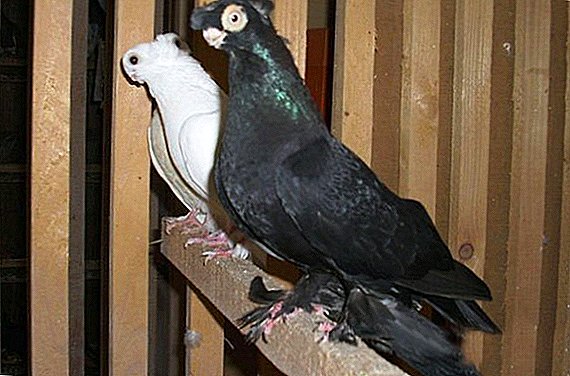 Among the pigeons, beloved breeders, one of the first places given to turmans, who have gained fame thanks to unsurpassed flight qualities. They can easily perform air stunts of varying complexity and therefore are valued around the world. In the English-speaking countries, these pigeons are called "rollers", and in the Russian-speaking countries they are called tumbling.
Among the pigeons, beloved breeders, one of the first places given to turmans, who have gained fame thanks to unsurpassed flight qualities. They can easily perform air stunts of varying complexity and therefore are valued around the world. In the English-speaking countries, these pigeons are called "rollers", and in the Russian-speaking countries they are called tumbling.
Common signs of Turman pigeons
Turmans are a remarkable breed of pigeons. They are distinguished by dexterity of movement during flight and low weight. Especially well they succeed somersaults in the air. However, for this to happen, breeders will conduct regular training with them. Turmans have many options for color, appearance and styles of flight.
We recommend to get acquainted with common species and breeds of pigeons.
The main characteristics of these pigeons are as follows:
- body: small;
- weight: no more than 800 g;
- beak length: medium or small;
- forehead: tall;
- neck: long
- eyes: big size;
- Color: dark;
- chest muscles: powerful;
- wings: long;
- tail: wide.
A distinctive feature from other breeds is the wide distance between the legs. 
Flight performance
Turmans are known all over the world for their flying skills. In the West, they are called "scooters" because of their ability to make coups in the air. Most often, they can be seen in the sky in small groups - breeders are confident that in this way they are competing. During one flight, a bird can make up to 6 flips, after which it needs time to rest.
Did you know? AT In the 17th century, gunpowder was made of pigeon droppings. At that time, King George I of Great Britain declared all pigeon dung of the country property of the crown and obliged citizens to collect it.
Varieties
Today ornithologists know 100 species of this breed.
Birds are divided according to the following criteria:
- beak length;
- colors;
- the presence of a forelock or tuft.
 Consider a detailed description of the most common Turman.
Consider a detailed description of the most common Turman.Tape
These Turmans got their name because of the white strip at the end of the tail. The classic color of the plumage is red, but there are other colors.
We advise you to read about what diseases you can get from pigeons, how to find out the sex of a pigeon, what life expectancy of pigeons in the wild and at home, how pigeons mate, how many pigeons sit on eggs.
The distinctive features are as follows:
- small head and body;
- forehead wide;
- the presence of a tuft;
- pupils of dark color, eyelids of a light shade;
- the beak is short and at the same time quite thick;
- wings reach to the ground;
- tail fluffed and slightly raised up.
 Flying tape turmans perform at a low altitude, with frequent coups through the head and various rotations.
Flying tape turmans perform at a low altitude, with frequent coups through the head and various rotations.Kursk
These birds are the result of breeding of such breeds as borodun, Nikolaev tutherez and ribbon turman. Their flights are distinguished by their grace, they are considered to be born acrobats.
The distinctive features are as follows:
- large body of black color;
- thorax large;
- musculature developed;
- wings large enough, their color is white;
- tail wide.

Oryol
On the origin of Oryol Turmans not preserved reliable information. Purebred representatives have a completely white color - dilution with other colors is considered a defect.
Other features:
- body is small;
- short beak;
- small head;
- forehead protrudes forward;
- dark eyes;
- eyelids give a bluish tint;
- the body is elegant;
- the neck is long;
- tail fluff.

Chisinau
These pigeons have the following distinguishing features:
- body color from brown and cherry to black;
- the tail and border of the wings are white;
- body is larger;
- beak longer and wider than others;
- small head;
- big eyes with eyelids white.

Odessa
Odessa Turmans have excellent flight qualities, they are well oriented in space and are tied to their home. With regular training, these pigeons can spend a long time flying, while demonstrating beautiful tricks.
Important! To prevent the birds from losing their flying qualities, it is strictly forbidden to mate pigeons by closely interbreeding. In addition, the chicks born from such a union will be sick and grow poorly.They are characterized by such features:
- the cone-shaped body, medium size;
- head slightly pressed down from above;
- posture haughty;
- wings long, strong;
- legs without plumage, with white claws;
- plumage is velvet, pours nacre.

Wolskie
Pigeons of this species can be in flight for up to 8 hours. However, they are not extremely demanding in the care.
Discover the different types of stately pigeons.
These birds are characterized by the following indicators:
- strong build;
- the neck is wide;
- thorax large;
- round head;
- strong beak;
- color pitch, with chaotic white splashes.

Tula
The Tula type of Turmans has not changed since the moment of their appearance. In the old days, it was widespread. These birds love to fly at a medium height, while climbing up in even circles.
Possess the following qualities:
- the color of plumage is dark red;
- white specks adorn the tips of the wings and tail;
- feathers have a lilac outflow.

Bryansk
A little-known kind of Turman. Gain a good height, making movements in circles. During one flight can make up to 5 flip-flops. Flight duration reaches 6 hours.
Learn how to feed the little pigeon, as well as where you can see the pigeons chicks.
The characteristics are as follows:
- color from white to darker;
- tall;
- on the nape there is a crest;
- wings winged;
- tail wide.

Conditions of detention
Since Turmans are quite valuable breed, they need proper care and assistance in breeding young animals.
A properly built dovecote has natural lighting, the presence of fresh air, as well as the maximum allowable purity.
- It is important that birds in the pigeon house are protected from bad weather, while the sun's rays must penetrate into the building in sufficient quantity.
- No less important is cleanliness, since improper care leads to a decrease in natural immunity, poor nesting, weakness, and a reduction in the life of pigeons.
- Since pigeons are turned up in pairs, the required area is calculated based on this. To keep 1 pair of large pigeons you need at least 1 m3 of space.
- For mating and the subsequent breeding of offspring, pigeons need nests. For this fit small boxes. It is important that each female has a personal nest. They are placed along the wall.
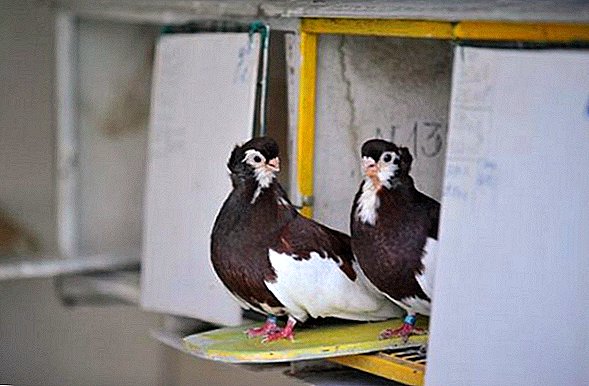
- It is also important the presence of perches, which are necessary for birds with plumage of limbs or lowered wings. They are fixed at a height of 30 cm from the ceiling, the thickness of the perforation should be 3 cm.
- Professionals recommend building feeders in the aviary - this will provide an opportunity to keep the pigeon house clean and also watch the birds while feeding.
- The temperature in the dovecote should be within 20 ° C, this is the optimum temperature for such birds.
- Fresh air is important for turmans - even when they are in the loft. It is necessary to make a door that can be opened for ventilation of the room, besides in the spring with its help the air in the room can heat up faster due to the arrival of sunlight.
We recommend reading about how to build a pigeon house, as well as how to make a pigeon feeder.
As free-standing structures are ideal enclosures. They are made of mesh with medium-sized cells. It is important that the walking area is protected from wind and rain.  It is also extremely important that it adjoins the loft and birds at any time could go inside the building. Improper maintenance and poor care can lead to the death of all livestock.
It is also extremely important that it adjoins the loft and birds at any time could go inside the building. Improper maintenance and poor care can lead to the death of all livestock.
Did you know? Turman chicks are hatched and fed by pigeons of a different species, as with the standard method their flight performance drops 4 times. In addition, this method allows to increase the number of chicks, because soon after the mother takes the eggs, she again becomes ready for their laying.
Pigeon house cleaning and disinfection
Cleaning in the loft should be carried out systematically. This is done so that the birds do not soil their plumage and do not attract flies with the smell of litter. During the harvesting, the feces are removed and the water is changed, while well washing the drinkers and sweeping the floor.  The basic rule for minimizing the possibility of disease in pigeons is disinfection.
The basic rule for minimizing the possibility of disease in pigeons is disinfection.
It should be carried out regularly, with the help of drugs that are not toxic to birds.
- Before the start of a planned disinfection, the litter is completely removed and all birds are temporarily removed from the pigeon house. Then a special soap solution is applied to all available surfaces. A blowtorch is also used as a disinfectant.
- Forced disinfection is distinguished by the use of mandatory after wet cleaning solution that helps to fight a certain infection. You can buy it at any pet store.
Important! Disinfection as prevention of various diseases is carried out monthly. Upon detection of sick birds, forced prophylaxis is performed once a week.At the end, the room is thoroughly ventilated, and the troughs and troughs are washed out with clean water.
Video: dovecote disinfection Today, it is possible to find gaseous disinfectants for sale, which allow treating not only the surfaces, but also air, water and the birds themselves.
What to feed
The feeding process and feed composition do not differ much from the recommendations for other breeds.
Read more about feeding domestic pigeons.
In the spring using the following mixture of grains:
- wheat;
- crushed corn;
- peas;
- millet;
- oat groats;
- barley;
- sunflower seeds.

They feed the birds 3 times a day. The amount of feed is calculated at 10 g per individual. In the cold season, feeding is carried out with the same grain, but the percentage ratio needs to be slightly adjusted - to increase the amount of whole-grain feed.
During molting, it is recommended to increase the amount of protein in the diet. To do this, birds give soaked bread, which is mixed with cottage cheese.
You probably will be interested to read about what vitamins to give pigeons.
Although street pigeons eat almost any food, it is better to know when breeding pedigree What foods are strictly forbidden to include in their diet:
- Bread (on an ongoing basis). It will cause irreversible changes in the body and lead to obesity.
- Rye. Causes upset stomach.
- Meat and dairy products. Easily spoil and thus adversely affect the condition of the digestive system.
 Despite the popularity of this breed, in our country there are very few breeders who can boast that they have clean representatives of Turman in the pack. Now, having learned more about them, anyone can please themselves with the purchase of a pair of pigeons and start breeding these magnificent birds in their area.
Despite the popularity of this breed, in our country there are very few breeders who can boast that they have clean representatives of Turman in the pack. Now, having learned more about them, anyone can please themselves with the purchase of a pair of pigeons and start breeding these magnificent birds in their area.


